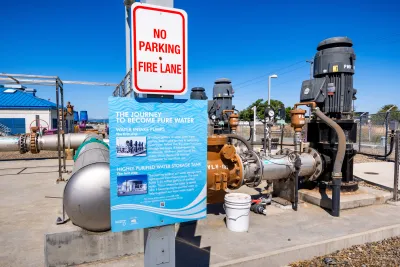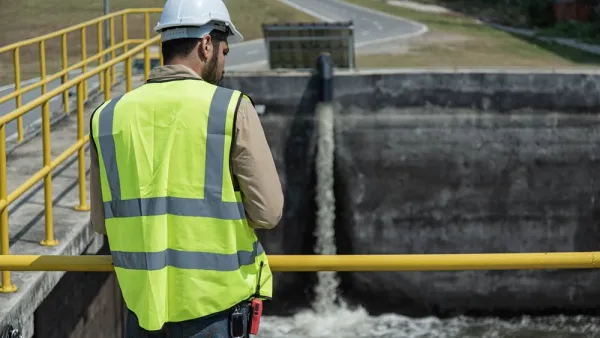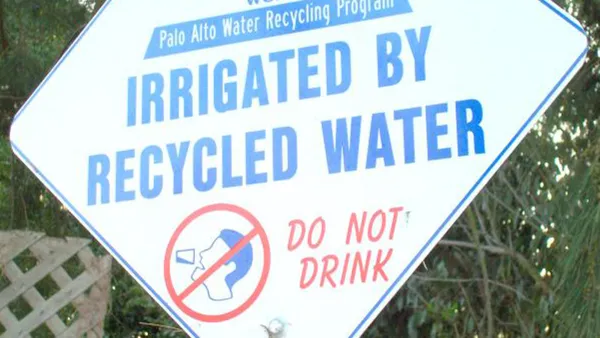Decentralized wastewater recycling systems take water conservation a step further by reducing the need for external infrastructure and keeping water recycling and reuse -in-house.’

“While centralized water reuse for nonpotable purposes has been around for decades, a trend called the ‘extreme decentralization of water and wastewater’—also known as ‘distributed water systems’ or ‘onsite’ or ‘premise’ recycling—is now emerging as a leading strategy in the effort to make water use more sustainable.” As Jim Robbins writes in Wired, in the future, buildings could become ‘water-neutral’ by recycling and reusing water in a closed loop system.
In 2015, San Francisco began requiring all buildings larger than 100,000 square feet to install onsite water recycling systems. “The headquarters of the San Francisco Public Utilities Commission has a black-water system, called the Living Machine, that treats its wastewater in engineered wetlands built into the sidewalks around the building, then uses it to flush low-flow toilets and urinals. The process reduces the building’s imported potable supply by 40 percent.” Recycling water onsite conserves both water and energy and reduces the need for costly infrastructure.
Experts call decentralized water recycling systems “the future of water” as water security becomes a more urgent global issue. But, for regulatory reasons, “A fully circular system, in which water is reused onsite for both potable and nonpotable uses, is at least five to 10 years away in this country, experts say.”
As Robbins points out, centralized water recycling systems have been in use for years, “But the new reuse paradigm fundamentally rethinks water systems, localizing them in much the same way that households and districts with rooftop and community solar have transformed energy systems away from centralized power plants.”
According to Aaron Tartakovsky, co-founder of Epic Cleantec, the systems being built in San Francisco have “written the playbook and de-risked the whole process” by providing a model framework for regulating and operating water recycling systems.
FULL STORY: Are You Ready for ‘Extreme’ Water Recycling?

National Parks Layoffs Will Cause Communities to Lose Billions
Thousands of essential park workers were laid off this week, just before the busy spring break season.

Retro-silient?: America’s First “Eco-burb,” The Woodlands Turns 50
A master-planned community north of Houston offers lessons on green infrastructure and resilient design, but falls short of its founder’s lofty affordability and walkability goals.

Delivering for America Plan Will Downgrade Mail Service in at Least 49.5 Percent of Zip Codes
Republican and Democrat lawmakers criticize the plan for its disproportionate negative impact on rural communities.

Test News Post 1
This is a summary

Test News Headline 46
Test for the image on the front page.

Balancing Bombs and Butterflies: How the National Guard Protects a Rare Species
The National Guard at Fort Indiantown Gap uses GIS technology and land management strategies to balance military training with conservation efforts, ensuring the survival of the rare eastern regal fritillary butterfly.
Urban Design for Planners 1: Software Tools
This six-course series explores essential urban design concepts using open source software and equips planners with the tools they need to participate fully in the urban design process.
Planning for Universal Design
Learn the tools for implementing Universal Design in planning regulations.
EMC Planning Group, Inc.
Planetizen
Planetizen
Mpact (formerly Rail~Volution)
Great Falls Development Authority, Inc.
HUDs Office of Policy Development and Research
NYU Wagner Graduate School of Public Service




























